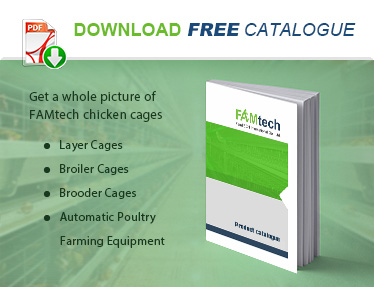Types Of Poultry Cage
In the modern breeding industry, poultry cages play a vital role. Whether it is small poultry such as chickens, rabbits, quails, or other farmed animals, the rational selection and use of cages can not only increase the breeding density, but also optimize feeding management, reduce the spread of diseases, and improve output efficiency. Different types of poultry are suitable for different types of cages. For example, laying hen cages are designed to increase egg production, while broiler cages focus more on growth space and comfort. This article will comprehensively introduce the types and characteristics of various poultry cages and how to choose suitable cages to help farmers optimize their breeding methods and improve production efficiency.
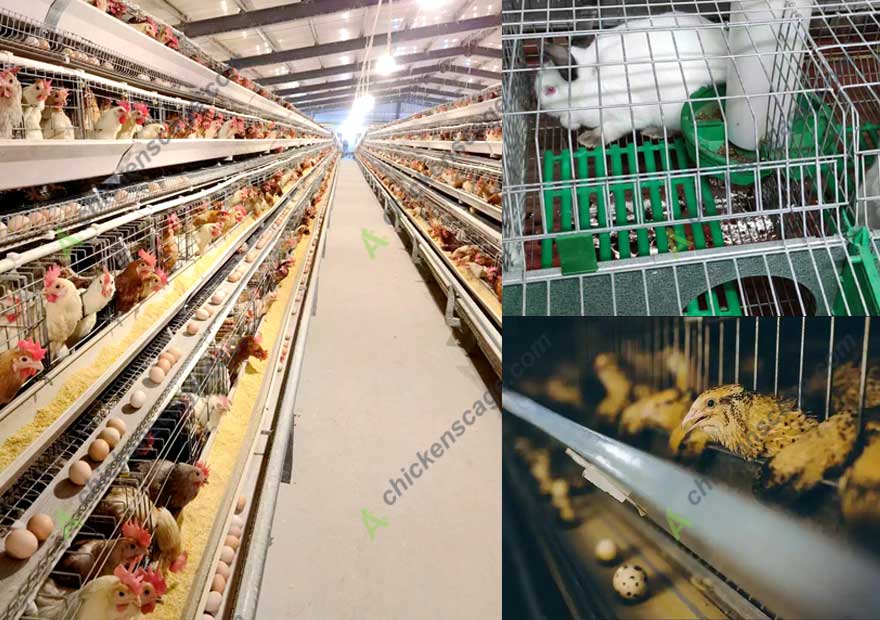
The main types of poultry cage
Chicken cage
Layer cage
Layer cage is a major product type in poultry cages specially designed for laying hens according to the birds’ physiological condition.
Types: A type layer cage and H type layer cage.
Features: focusing on improving egg productivity and trying not to produce broken eggs. Also, it takes full advantage of space by building several layers that even can reach 8.


Broiler cage
A broiler cage is designed for raising one-day-old chicken to its harvest day for meat purposes. Simple type broiler cage in which harvesting is realized by manual work. An automatic harvesting broiler cage is designed with structures such as the conveyor for catching birds and the disc-catching machine.
Types: A type broiler cage and H type broiler cage.
Feature: focusing on a comfortable bottom net for the health of chicken feet, sufficient space, and easy catchment of chickens when harvesting.
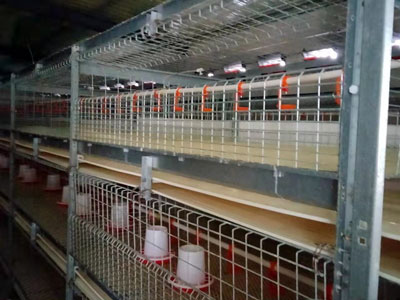
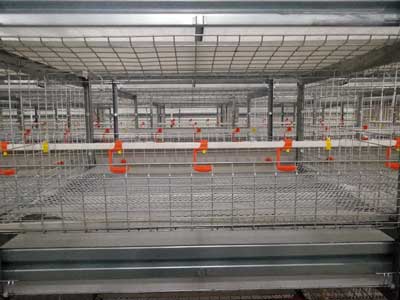
Chick cage
A chick cage is used for keeping baby chicks from one day old to 7-8 weeks. As this stage is facing challenges of high mortality, the design and material of it should be careful. Types: A type chick cage and H type chick cage.
Features: attention needs to be paid to the chicken house design in aspects like temperature, humidity, light intensity, and time.
.jpeg)
Pullet cage
A young hen less than one-year-old yet has not started laying eggs is suitable for pullet cages. A pullet cage is a transitional cage for chickens from chick turning to laying hens.
Type: A type pullet cage and H type pullet cage.
Feature: fewer tiers, good material, comfortable bottom net, and complete auxiliary equipment.
.jpg)
Rabbit cage
Commercial rabbit breeding cage provides a sanitary environment for female rabbits and meat rabbits.
Type: breeding cage and meat rabbit cage.
Feature: the rabbit-friendly design creates a comfortable environment for the mother rabbit to give birth and feed the baby rabbit. The intensive closed-rearing method greatly reduces foreign diseases.
.jpg)
Quail cage
Using a quail cage to breed quails is highly efficient and a quick circle production.
Type: quail cage for egg purpose and quail cage for meat purpose; A type and H type.
Feature: easy installation, easy to operate, quick and easy feed by simple cups and feeders.
.jpg)
Materials of poultry cage
Galvanized poultry cage
Poultry cages with high quality usually need to adopt premium material such as hot-dip galvanized material and cold-galvanized material.
Pros: The galvanized poultry cage stands out for its durability, easy cleaning, and maintenance characteristics.
Cons: relatively high price.
Plastic poultry cage
Plastic poultry cages often use polymer plastics as the raw materials. With reasonable net design, the comfort of chicken feet is ensured to prevent chicken from hurting. The plastic material is not easy to rust and rot. Besides, the ventilation and skid resistance is good.
Pros: economic price, lightweight, strong resistance, good ventilation.
Cons: high-temperature intolerance, limited loading capacity, easy to age.
Stainless steel poultry cage
A stainless steel poultry cage has a beautiful appearance, suitable for indoor chicken raising.
Pros: durable, easy to clean, and can efficiently prevent bacteria.
Cons: high cost, more weight.
How to choose a suitable poultry cage?
When choosing the poultry cage, several factors should be taken into account such as the material, material processing method, size, ventilation, cost, etc.
Cage material
Cold-dip galvanized: thin layer of zinc, easy to rust, relatively short life (6-7 years).
Hot-dip galvanized: thick zinc layer, strong corrosion resistance, long lifespan up to 15-20 years.
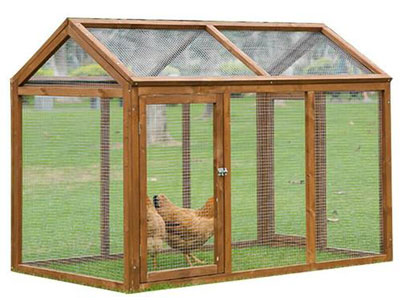
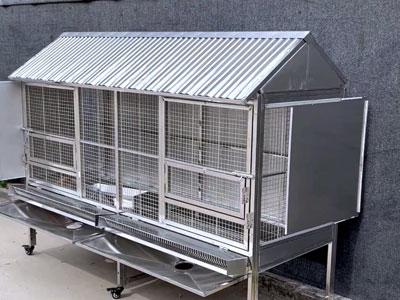
Electrostatic spraying: the powdered paint is adsorbed on the cage wire through high-voltage static electricity to form a highly corrosion-resistant phosphating film with a service life of up to 15-20 years and a smooth and beautiful surface.
Zinc-magnesium alloy wire: strong corrosion resistance, good elasticity, but high cost.
Stainless steel: strong and durable, not easy to rust, and service life can reach more than ten years or even decades.
Cage size
The size of the chicken cage should be determined according to the type and number of chickens. For example, for a single rooster, it is recommended that the cage be no less than 30 cm long, 20 cm wide, and 25 cm high. If there are multiple chickens, the cage size should be appropriately increased according to the number of chickens.
Ventilation and durability
Metal material: such as galvanized wire cages or stainless steel cages, which are strong and durable, have good ventilation and are suitable for various breeding environments
Wood material: good thermal insulation performance, but easy to get damp and moldy, and needs regular cleaning and maintenance.
Plastic material: lightweight and affordable, but poor air permeability, need to pay attention to whether there are enough ventilation holes on the cage.
Auxiliaries for poultry cages
Automatic feeding machine
The automatic feeding machine is recommended for farms when the number of birds is large. It saves labor, and time, and feeds at the same time.
Automatic drinking system
An automatic drinking system is mainly composed of a water pipe, water trough, pressure regulator, nipple drinker, and water filter.
Automatic manure removal system
The manure conveyor belt and manure scraper work together to remove the manure from the chicken house. It keeps the clean of poultry cages and provides poultries with clean air.

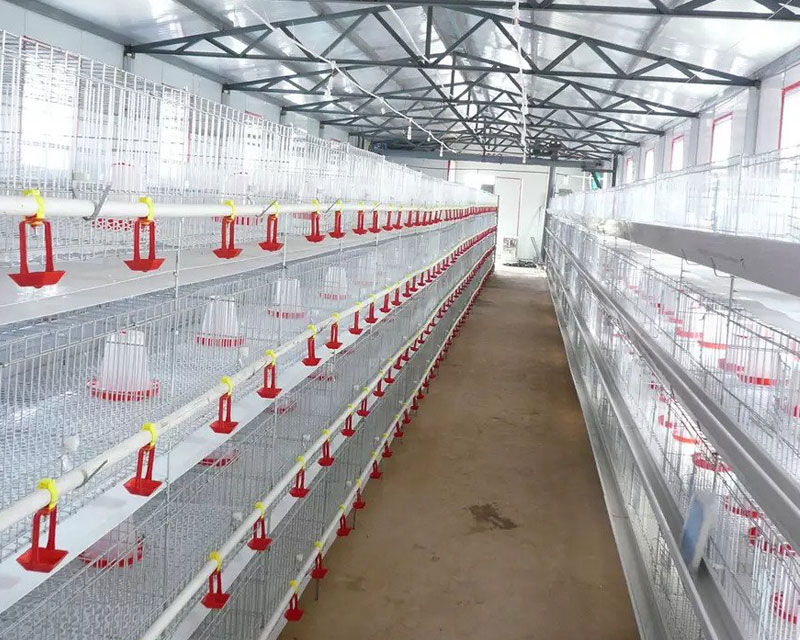 4 Tier H Type Broiler Cage Project In South Africa
4 Tier H Type Broiler Cage Project In South Africa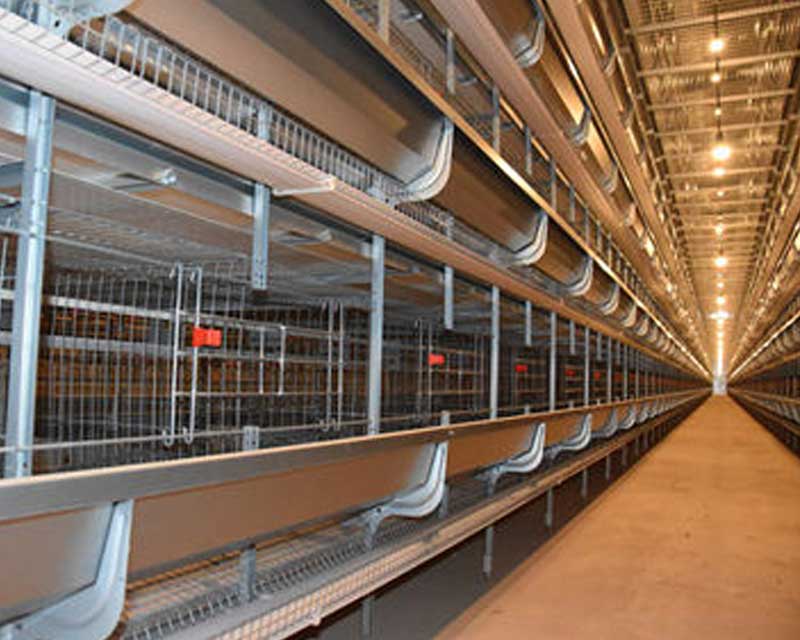 Layer Cage Project In Cuba
Layer Cage Project In Cuba H Type Layer Cage Project In Southeast Asia
H Type Layer Cage Project In Southeast Asia A Type Layer Cage Installed In West Africa
A Type Layer Cage Installed In West Africa Nigeria H Type Layer Cage Project
Nigeria H Type Layer Cage Project H Type Layer Cage Installed In Togo
H Type Layer Cage Installed In Togo